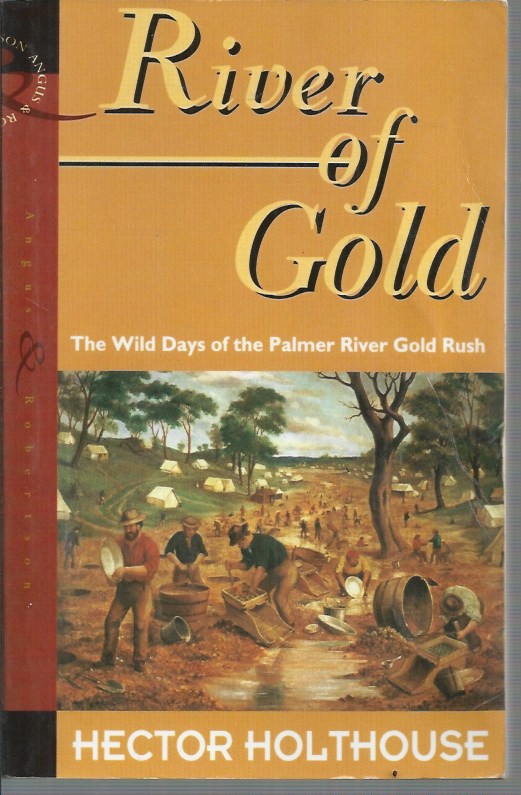MINING AUSTRALIANA
217 p. : ill., maps ; 19 cm. #0721/040623 Gold mines and mining — Queensland — Palmer River Valley — History. | Palmer River Valley (Qld.) — History.
Arriving one day after Dalrymple himself, they immediately started setting up the operation. Among the staff about the ‘Leichhardt’ was the Gold Commissioner, an Engineer of Roads (sent to find the best route between the Palmer and Endeavour rivers), a lieutenant to survey the estuary, and a police party to keep law and order. Over seventy prospectors and miners also disembarked, all with dreams of becoming rich in these new gold fields.
The population of ‘Cooks-town’, as it was then known, was close to 4000 people by the middle of the following year. The towns name was later changed to its present moniker of ‘Cooktown’ in June of 1874.
Gold flowed as freely as the water it was found in, and the population continued it’s increase, and by the turn of the century it was the second largest township in Queensland. The population had reached in excess of 30,000 people, and the town was serviced by no less than 65 registered hotels, 20 eating houses, 32 general stores and a multitude of other businesses and outlets. People were drawn from far and wide, by the lure of gold, making a rich and complex tapestry of peoples.
Of the 2940 people reported to live in Cooktown by the 1883 census, 480 were Chinese. The residents of Maytown (centre of the Goldfields) were listed at 481, and the maximum number of land-holders (people with legal title) during the rush was 1009.
